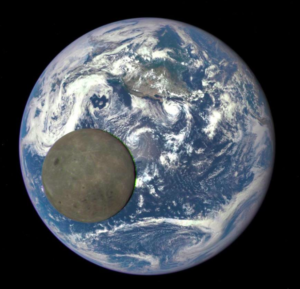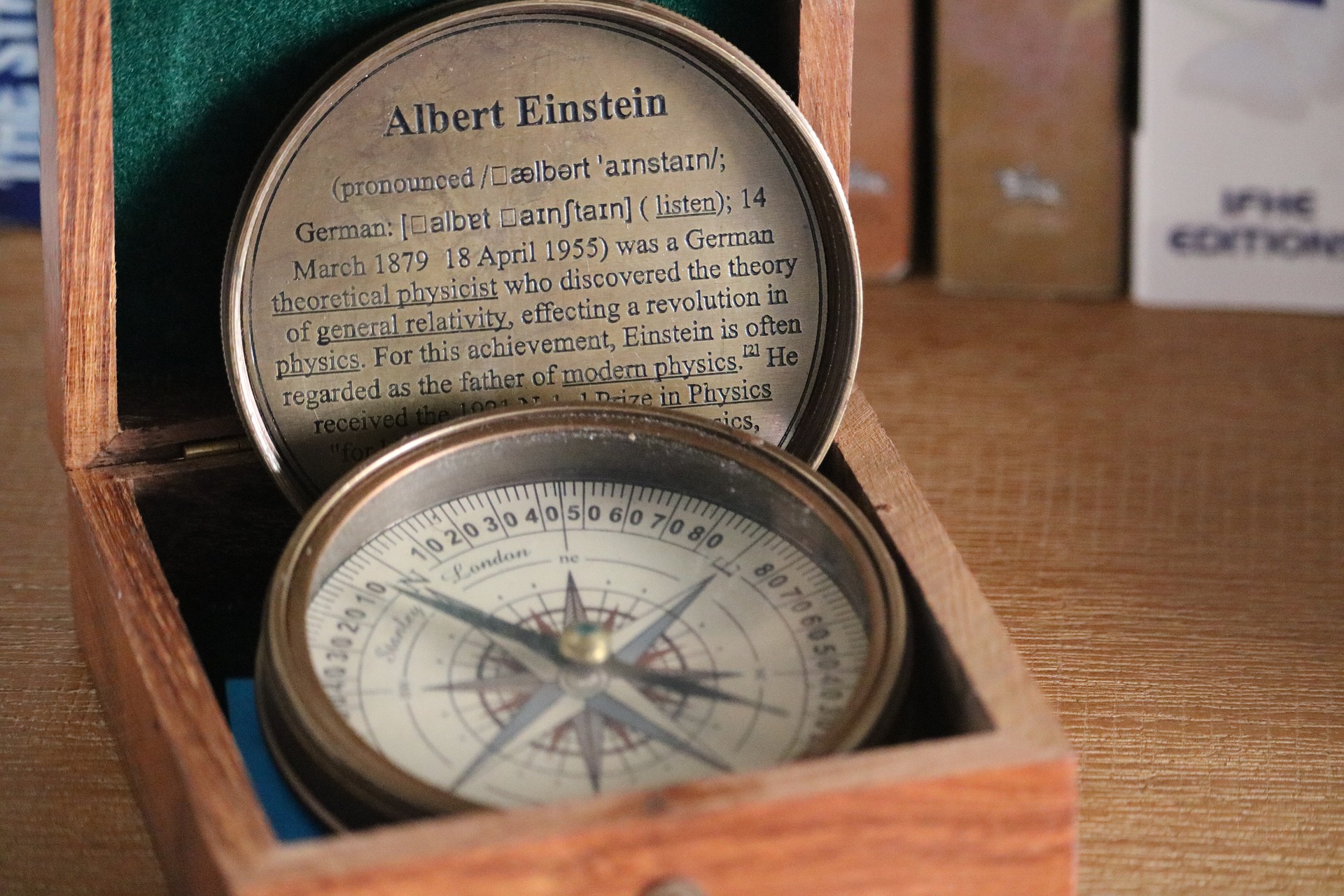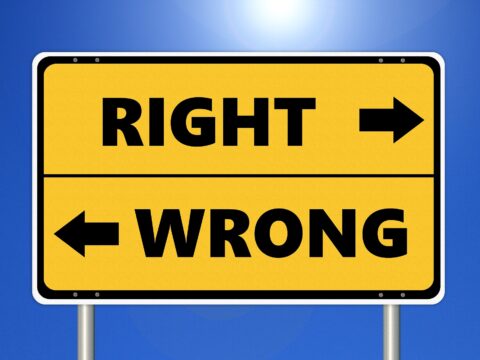Einstein once famously said, “Look deep into nature, and then you will understand everything better.” In my search for a natural origin for natural rights, I did that. What I found was that the simplest basis for natural rights has been hidden in plain sight. Natural rights are so ubiquitous that, like a fish doesn’t know he’s wet, political philosophers have looked right past the thing they were searching for. This does not discredit them, it took me over two years of pondering Einstein’s physical universe to finally see what was staring back at me the entire time. I had to have a paradigm shift.

This introduction will help you with that paradigm shift. Once you recognize this new viewpoint, you will see natural rights in a new, profoundly simple way. But you have to see it through new eyes.
A Word About Words
To help with this paradigm shift, I have to use words. But our goal here is to move past the limitations of words and directly comprehend that world — a kind of mind-meld with reality. This direct comprehension produces the needed paradigm shift.
Rights

What is a right? What do we mean by that word? It is much like a legal dimension and analogous to a physical dimension.
We say that the dimension between the earth and its moon is about 186,000 miles. That is a contrivance we use. There is no such object we can lay on the workbench. We attribute dimensions to things so as to be able to work with them. It’s an abstract, mental tool and a handy one.
Likewise, the idea of rights. There is no such “thing” as a right, but we use the idea as a convenient tool in our discussion of authority or agency possessed by a person to use his powers and capacities. It is also a mental tool and a handy one because it has enabled so much progress.
The “rights” idea is an abstraction, a concept drawn out of something else. So what is that something?
Authority
The first step in the paradigm shift we need here is to realize that the law of nature we call gravity has authority because it has power. “Authority” is always defined using the word “power”. We see the couplet “power and authority” everywhere. So consider these three ideas.
-
The earth uses the authority of the law of gravity to hold its moon in orbit.
-
The earth uses this authority to sprain your ankle when you step on a round stone.
-
The combined powers of gravity of all the heavenly objects control one another in a grand, authoritative polka.
Think Power = Authority = Rights
The next step is to connect power and authority to natural rights. A natural right is, after all, an authority to exercise some power or capability that we already have. It makes no sense to say there is a natural right to do something that cannot be done.
Here are five ideas to comprehend:
-
The stone has a natural right to the space it occupies.
-
Light has the right to enter your eyes and illuminate your understanding.
-
A tree has the right to consume the sunshine it absorbs.
- You have the right to stop reading this before your mind is forever altered.
Everything Has a Right

The next step is to realize that every single operator in the universe, quarks, whales, and people, exercises its intrinsic natural rights. This is a profound and fascinating paradigm shift — from rights based on decades of debate and born of political logic, to something intrinsic and so obvious we’ve always looked past it.
If you have done these little mental exercises and not gotten stuck in tradition or lost in the words, you are seeing how extensive and how pervasive these natural rights are. They are in everything, they authorize everything, and they arise from the capabilities possessed by all things. This is a unification of capability, authority, and being. I call these rights “temporal” because they arise in the same instant as their power and are extinguished in the instant of its end.
The reason this paradigm was not discovered until now is that the ubiquitous phenomena of things “doing their thing” is completely unremarkable. The connection between the power to do and the right to do was hidden in plain sight. Like the fish that doesn’t realize he is wet, the sheer pervasiveness of that connection has escaped all the theorists who have written about natural rights. The next time you consider their thoughts, you will notice that they sometimes came very close but never actually identified that connection.
But “only sentient beings can have rights”
Natural rights have traditionally been attributed exclusively to humans. If you say “Only sentient beings can possess the authority of rights,” you have said, in so many words, that the process that created man is entirely exclusive to man. This is a common paradigm problem like the earth being the center of the universe.
A Mind Meld with Reality
To complete your excursion into the new natural rights paradigm, I want you to forget all the words, especially “power”, “authority”, and “rights”, and just visualize the whole panoply of operators around you, each one exercising its abilities to cause or prevent change. Include your own capacity to do whatever your power of choice selects.

Just observe what is actually happening without putting words to it: plants converting solar energy into tissue, roots secreting acids that convert sand to soil, flowers attracting bees, bees harvesting nectar, sunlight playing in the red clouds of sunset while converting them to invisible water vapor, etc. Enjoy the peaceful revelation that fills your mind for a moment as the background noise of words fades away and you watch the mechanisms of change, growth, intelligence, and progress.
This is the authority of the laws of nature in operation: the constant, ubiquitous exercise of rights in this actual world where power and authority are perfect synonyms.
What You Saw
If you didn’t get the fascinating picture of the operating machinery of the universe, I urge you to go back through the steps again. You should realize that words are semantic symbols that get between us and the objects they describe and becloud the thing they are supposed to represent. A wise man once said, “I never made one of my discoveries through the process of rational thinking.” That was also Albert Einstein.
In this case, by moving to a more fundamental layer of thought, we see that all this talk of authority and rights is an abstract layer that we are required to use in order to discuss the reality that gave rise to the discussion in the first place. Our goal here is to comprehend the reality that gave rise to the words we use.

It doesn’t really matter what words we use, what matters is what is happening. The temporal rights paradigm connects law with reality in a practical, implicit way that empowers natural rights by revealing their intrinsic source. Once you have seen that wordless vision of the universe in action, you see that rights are everywhere and in constant operation.
That is the paradigm of temporal rights. It is the most powerful paradigm for the unassailable establishment of the natural rights that are the essence of human rights. They are all inalienable — you can’t violate the stone’s space without violating the stone itself. Forced restraint of speech or belief is slavery. Restraint of a capability is a violation of its owner — the contraction of the thing to some lower level of being.
Finally, a word to those who say there is no such thing as “natural rights”: if you don’t think these natural rights exist, then you have no right to say so and no authority to say so, and even if you persist in saying so, no one will recognize your authority to say so because you are saying that such authority does not exist.
So that’s why it’s irrefutable.




